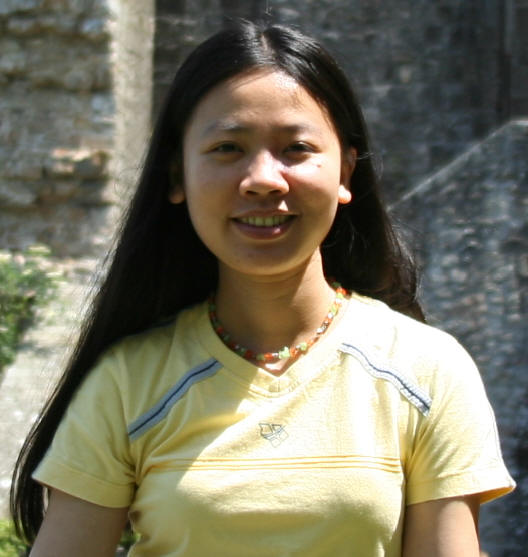Hai Tran is now with Institut Polytechnique de Hanoi.
Contact
Email : thanh-hai.tran@mica.edu.vn

|
Hai Tran is now with Institut Polytechnique de Hanoi. Contact
|

|
I recently graduated from INPG. My Ph.d works have been done at PRIMA team, GRAVIR laboratory, INRIA Rhone-Alpes. My advisors were Pr. Augustin Lux and Hoang Lan Nguyen Thi.
Now, I am an expert engineer at Lagadic team, IRISA-INRIA Rennes. I work with Eric Marchand on Augmented Reality based on Image Recognition.
I'm interested in feature extraction, object recognition, tracking, text detection, for applications in Computer Vision and Augmented Reality.
We developed a simple but efficient algorithm to detect multiscales visual features in an image: ridges and peaks. The method is based on Laplacian of Gaussian of the image signal and differential geometry properties of the surface associated to the image. Experiments of features detection carried out with many types of images (eg. CT&MR images, fingerprints images, realworld images) showed that the method is very good to detect features representing object shapes. These features enrich the set of classical features (eg. region, contour line, interest point) and allow a significant representation of an object in image.
We proposed a new method for object representation based on ridges and peaks detected at several scales. Each object is represented as a graph such that each node is a feature (ridge or peak) and each arc is built from covering relation between spatial extensions of two features. This graph describes global shape as well as details of the object, allows many efficient strategies for graph matching.
Each person is represented by some significant ridges and peaks detected at appropriate scales, representing important human parts like head, torso and legs. Geometrical relations between features were explored to build human model, which is a vector of 10 components describing a configuration of a human. This representation method is applied for person detection in surveillance sequences. It has been experimented on 26 video sequences provided by CAVIAR project and obtained a good rate of detection (85%).
An object is characterized by some significant ridges or blobs. Tracking object consists in tracking ridges and blobs. The Kalman filter is used to predict position and orientation of ridges or blobs in the next frame. Ridges and blobs based tracking has been applied for cars or footplayers tracking in DETECT project.
A text is some kinds of structural object. At a small scale, we see some traits of characters. At a bigger scale, we see only a long band corresponding to the text line. Using these properties, we developed a method to model text in an image using ridges. More specifically, a text is characterized by a long ridgeline at a coarse scale and several shorter ridges perpendicular to long ridgeline at a small scale. This representation of text is generic to many types of text: alphabet or ideogram, scene text or artificial text and independent with text orientation. The detection is evaluated on images of different nature gives a surprising precision and recall (93%).
We developed a realtime method for detecting keypoints in an image. These keypoints are described by a gradient magnitude based descriptor vector, which is projected onto an eigenspace to reduce dimensions and make faster the search for nearest neighbors. This method is experimented in a context of visual servoing: move a robot from a certain position to a desired position. It worked in realtime (10-14fps) and shown to be very robust to occlusion. In addition, it is capable to reinitialize whenever objects of interest get lost.
|
| Lagadic
| Map
| Team
| Publications
| Demonstrations
|
Irisa - Inria - Copyright 2009 © Lagadic Project |